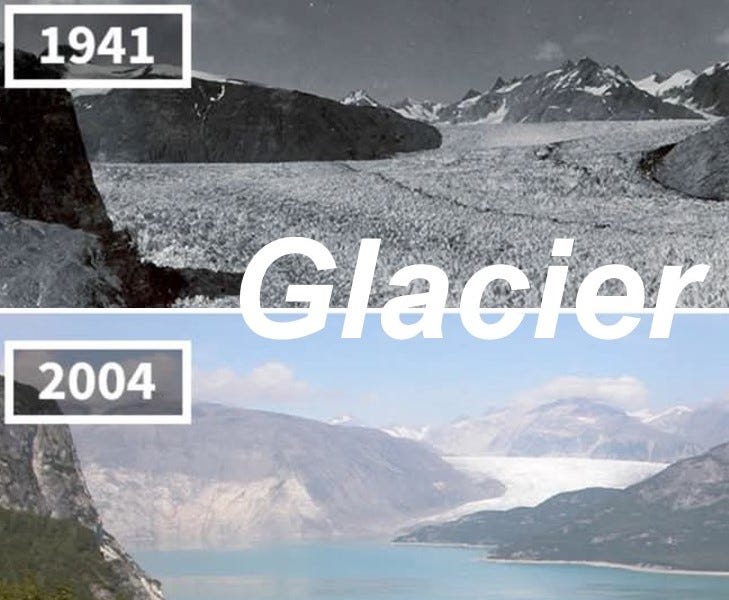Glacier
Back in the 1800s, only 0.028 percent of the air was carbon dioxide. Now it’s 0.042 percent, nearly twice as much. Still doesn’t seem like much, though, does it? Unless you’re a glacier. — ‘An Einganeer’s Tale’ page 74
Few seem to question anymore whether climate change is real. Some folks do still question whether it is due to natural things (sun spots, earth cycles, volcanic activity), or due to man. I tend to lean towards man. But the real question now is what, if anything, we can do about it? And whatever we do, can we do it efficiently, economically, and while retaining or improving our way of life? What’s called for is a sound engineering solution, not a political one.
Politically, the solution seems to be all about whatever it takes to eliminate fossil fuels. This has led to the development of wind and solar power devises, a resurgence in nuclear energy, and biofuels produced from food stocks. All, though, have been shown to be less efficient, less economical, less dependable, more risky, or more hazardous than current fossil fuel operations.
The fossil fuel industry has evolved over a century through superior engineering innovations to become the very best deliver of energy to mankind. It knows how best to drill for, produce, refine, and transport energy. We should be building on this technology. Political solutions, however, seem to shun anything fossil fuel related.
The biofuels solution I end my book, An Einganeer’s Tale, with uses downstream oil refining technology to create fuels from organic wastes whose energy would otherwise be lost to degradation. It continues to show promise, but has yet to be commercialized. It competes with the “biofuels produced from food and feed stocks” industry, which is currently more economic, but, in my opinion, not sustainable. And something just does not seem right about using food and feed stocks for energy production. (I feel the same about farm land for solar farms and pristine areas for wind farms.)
Anyway, could there also be an upstream oil industry technology that we could build on? Yes!
Much of upstream oil production involves taming the raw energy associated with producing fossil fuels, energy that naturally results from the pressures and temperatures deep within the earth. What if this geothermal energy was itself the product, instead of something that has to be controlled for the production of oil and gas?
Up to now, geothermal has been a very small part of the overall energy picture. This is largely because it’s only been produced at obvious, easily accessible locations — and without the engineering talent and technology of the oil industry. If the industry’s focus was changed to extract heat instead of hydrocarbons from the earth, no telling what could be accomplished.
A new report from the International Energy Association says there’s enough identified untapped geothermal energy to satisfy the electricity demands of India and the U.S. combined! The oil industry has perfected the arts of deep drilling and hydraulic drilling (aka fracking). Applied to geothermal heat production, these technologies could tap into this virtually unlimited source of clean energy.
I’m sure folks will first raise concerns about the potential of manmade earthquakes. But did you know nearly all induced earthquakes are not caused by fracking, but by the injection of waste fluids back into the ground that result from fracking and producing hydrocarbons? And that with geothermal, there are hardly any waste fluids, since much less chemicals and additives are used — and because the water/steam energy transfer system is closed (continuously recycled)?
Geothermal looks to me like the best solution to our energy needs and climate change concerns. As for the glaciers, it will take another ice age to bring them back, and I don’t think anybody wants that. Will global warming continue? I hope not. But I am confident that regardless of what happens, if we stick to applying sound engineering principles and building upon what we already know, mankind will adapt and continue to thrive.


